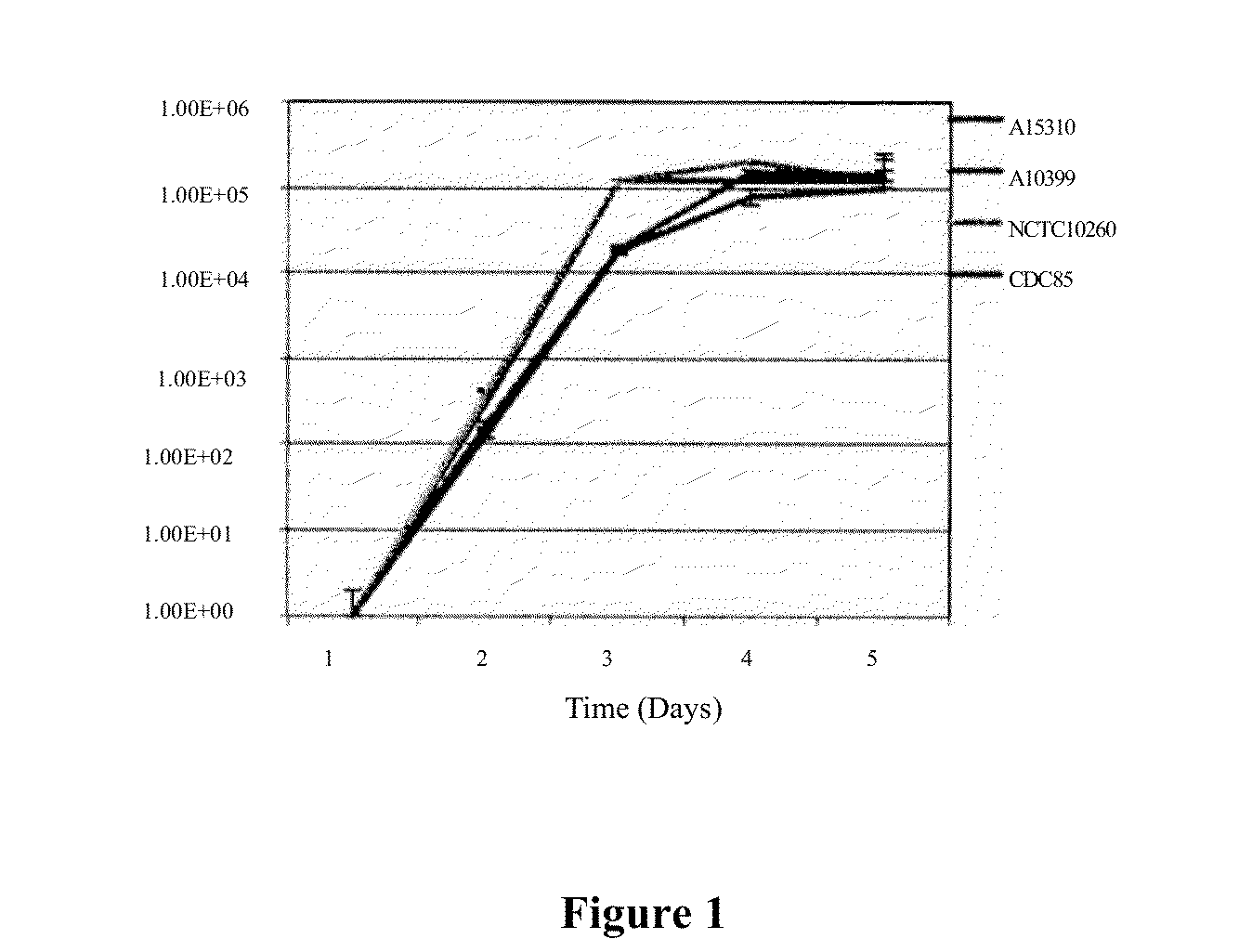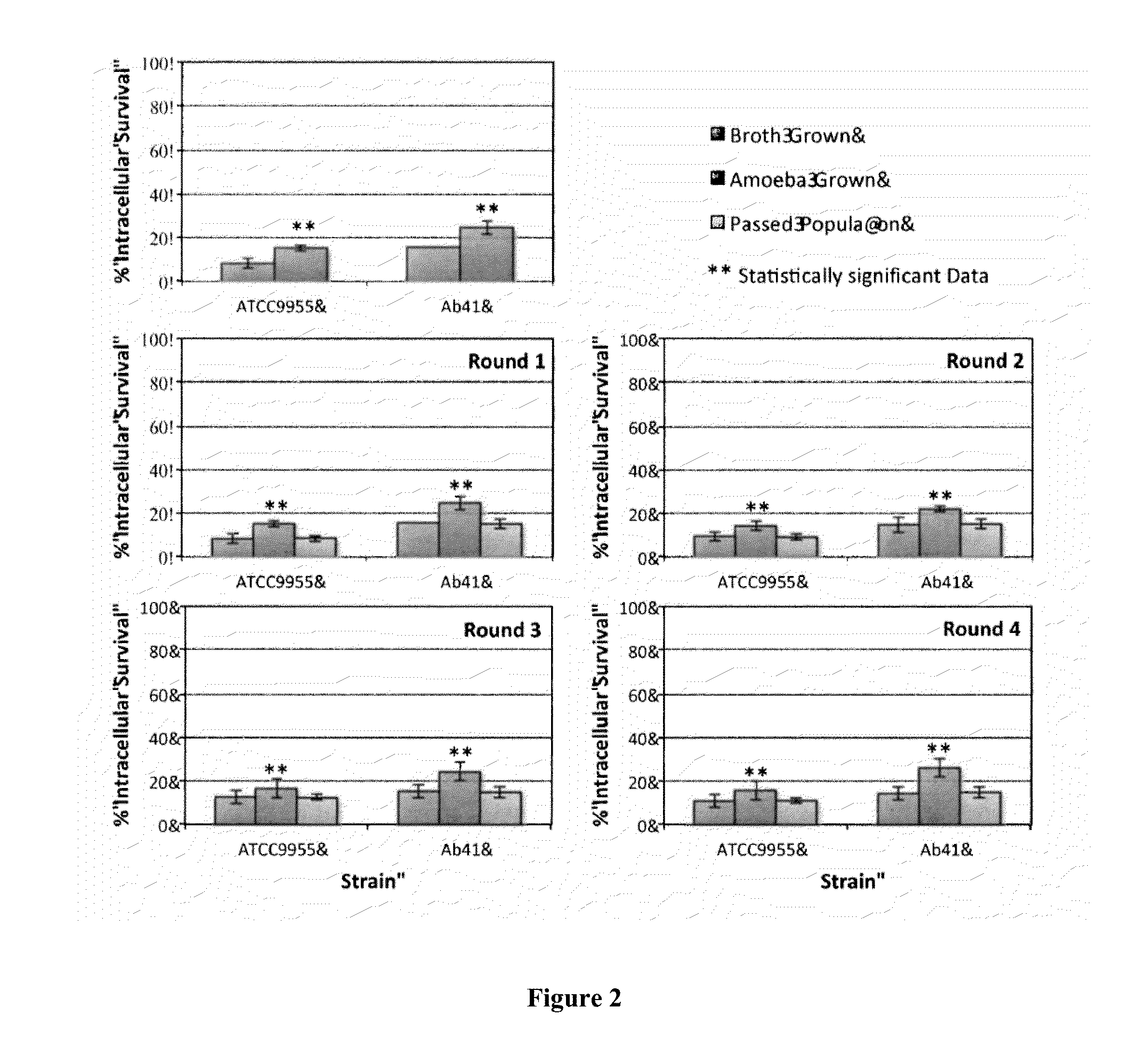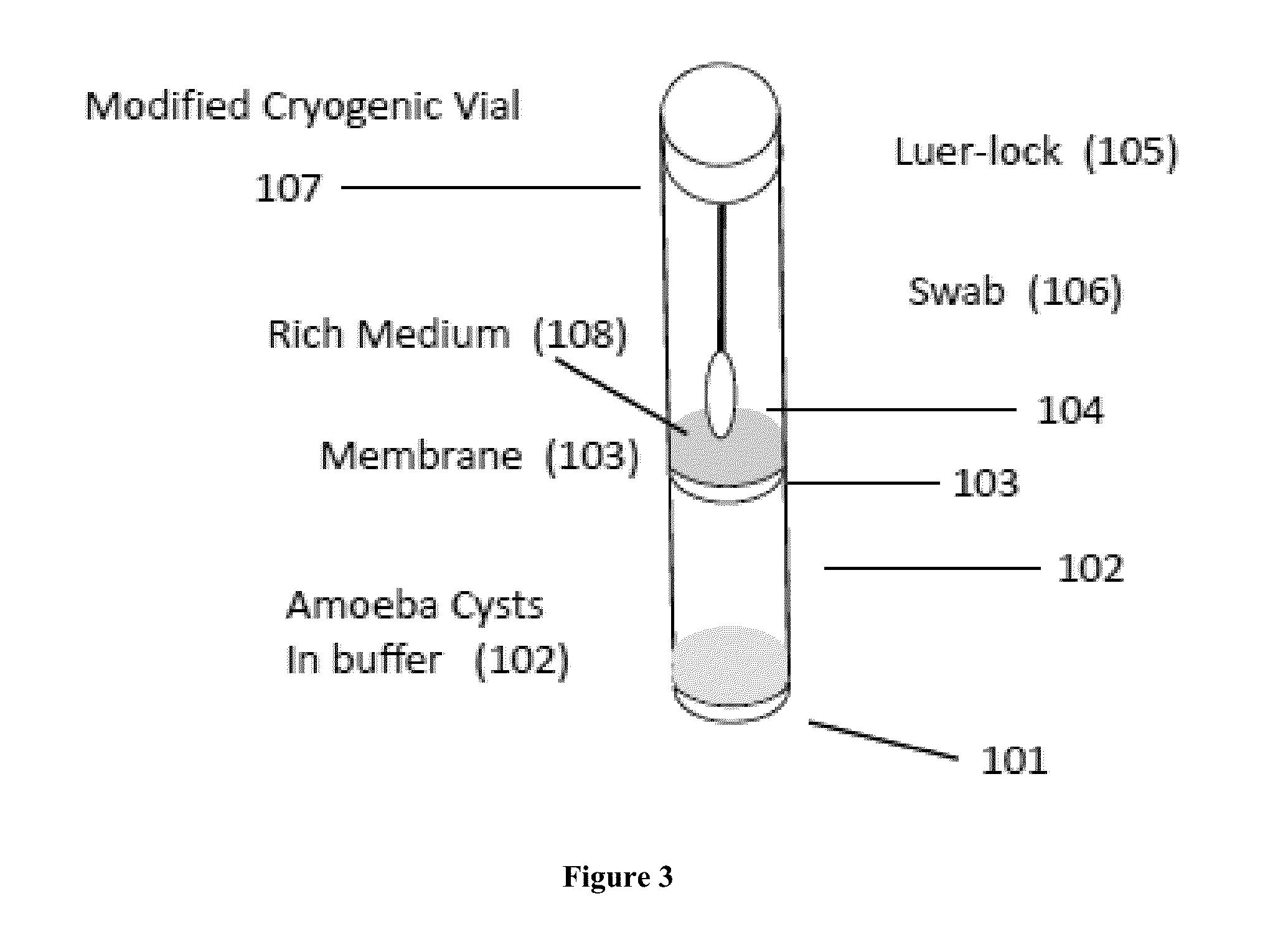Compositions and methods for pathogen transport
a technology of pathogens and compositions, applied in the field of compositions and methods for pathogen transport, can solve the problems of wasting time and reducing the detection efficiency of new emerging biothreats, and achieve the effect of reducing the number of pathogens
- Summary
- Abstract
- Description
- Claims
- Application Information
AI Technical Summary
Benefits of technology
Problems solved by technology
Method used
Image
Examples
Embodiment Construction
Definitions
[0014]The practice of the present invention will employ, unless otherwise indicated, conventional techniques of tissue culture, immunology, molecular biology, microbiology, cell biology and recombinant DNA, which are within the skill of the art. See, e.g., Sambrook, Fritsch and Maniatis (1989) Molecular Cloning: A Laboratory Manual, 2nd edition; F. M. Ausubel, et al. eds. (1987) Current Protocols In Molecular Biology; the series Methods in Enzymology (Academic Press, Inc.): PCR 2: A Practical Approach (1995) (M. J. MacPherson, B. D. Hames and G. R. Taylor eds.); Harlow and Lane, eds. (1988) Antibodies, A Laboratory Manual; Harlow and Lane, eds. (1999) Using Antibodies, a Laboratory Manual; and R. I. Freshney, ed. (1987) Animal Cell Culture.
[0015]All numerical designations, e.g., pH, temperature, time, concentration, and molecular weight, including ranges, are approximations which are varied (+) or (−) by increments of 1.0 or 0.1, as appropriate. It is to be understood, al...
PUM
 Login to View More
Login to View More Abstract
Description
Claims
Application Information
 Login to View More
Login to View More - R&D
- Intellectual Property
- Life Sciences
- Materials
- Tech Scout
- Unparalleled Data Quality
- Higher Quality Content
- 60% Fewer Hallucinations
Browse by: Latest US Patents, China's latest patents, Technical Efficacy Thesaurus, Application Domain, Technology Topic, Popular Technical Reports.
© 2025 PatSnap. All rights reserved.Legal|Privacy policy|Modern Slavery Act Transparency Statement|Sitemap|About US| Contact US: help@patsnap.com



